Preparing your business for a rising interest rate environment
Date
10 June 2021
Share

Strong demand and restricted supply typically lead to central banks moving towards providing less economic stimulus, and rising interest rates is one tool they have to achieve this.
We are currently seeing the early stages of a tightening interest rate cycle. Find out more on how to prepare your business for a rising interest rate environment.
For both business borrowers and consumers with home mortgages, it may be a struggle to recall the pre-Global Financial Crisis days of early 2008 when the Official Cash Rate (“OCR”) sat at 8.25%. This typically meant floating mortgage borrowing rates of well over 10% and business borrowing rates were usually a few percent higher again. Some business owners will never have operated in an increasing interest rate environment.
Aside from a short lived “bump” during 2015, wholesale and retail rates in New Zealand have trended downwards since 2008. In the midst of government and reserve bank Covid-19 “lockdown stimulus”, our OCR fell to its current historic low of 0.25%.
Economic commentary and wholesale market pricing now point to rising interest rates over the short to medium term. In recent months, we have seen longer-term fixed rates offered by both banks and non-bank lenders increase reasonably significantly. This points to a market expectation of rising interest rates in the short to medium term. Recent commentary from Kiwibank economists points to increases in 2022, and borrowers should be aware that wholesale rates always move in anticipation of an increase well before the actual OCR increase occurs https://www.interest.co.nz/property/110656/kiwibank-economists-who-are-forecasting-first-official-cash-rate-rise-may-next-year
For several reasons it is unlikely that we will see interest rates rise to pre-2008 levels. These include:
- Post GFC, the global economy has supported good economic growth without inflationary pressure.
- A structural change in debt levels likely means any increase in interest rates will have a larger impact early. With asset prices and debt levels reflecting structurally lower interest rates, a relatively small increase in interest rates will have a greater impact on borrowers and reduce economic stimulus. For example, an increase in home mortgage rates for a borrower rolling off a current 1-year fixed rate of 2.25% onto a rate of say 4.0% would have a larger proportional impact on that borrower’s cash flow. Put simply, many borrowers, particularly in the housing market, would struggle to afford historic interest rates.
So what does this mean for business borrowers? Firstly, any increase will be market wide and impact all business borrowers. All a borrower can do is mitigate the impacts on their business. We encourage borrowers to consider:
- Hedging with a mix of fixed and floating rates. When considering a longer-term debt commitment, for example borrowing to buy machinery over a five-year term, a fixed rate provides certainty of not just interest costs but that your payments will not change. At face value, some floating rates are currently considerably lower than long-term fixed rates. However, it is highly likely that the interest rates for the floating rate loan, and therefore your monthly repayments, will increase over the term of the loan. By fixing now, it is likely you are fixing near the bottom of the interest rate cycle, and your business gains certainty as to its monthly loan commitments.
- If borrowing on a floating interest rate, ensure you have some capacity in either your profit margin or your cost structure to absorb or pass on interest cost increases.
The Finance New Zealand team recognises that interest rate is only part of any borrowing decision. A range of other factors come into any transaction that our team works on. As well as interest rate, we will consider and advise upon considerations such as the ability of a lender to deliver an approval within necessary timeframes, loan amortisation terms (as ultimately it is cash flow, not interest rate, that matters), differing loan to value ratios offered by each lender, differing security requirements between lenders and the ability to use products such as asset finance revolving credit facilities to reduce interest cost.
The Finance New Zealand team can provide advice on how to mitigate interest rate risk, and ultimately manage interest costs for any business.
Similar Posts
07 February 2024
Business finance news: The finance sector regulatory environment
Many businesses will welcome a change in government to one seen as more business friendly. Within the financial sector we expect to see the following impacts in the short term:

07 February 2024
Business finance news: The domestic economy
Business confidence has improved since late 2023 but remains a mixed bag. This mirrors what we are seeing across our own business. As we have returned from summer holidays, there seems a more optimistic attitude within our client base.


Page Links
Contact us
Finance New Zealand Limited L11 BDO Tower, 19-21 Como Street, Takapuna, Auckland 0622 PO Box 65164, Mairangi Bay 0754 T: (09) 222 0320E: info@financenz.co.nzMember of


Proud Sponsors of Auckland Rescue Helicopter Trust
Copyright Finance New Zealand Ltd 2024



